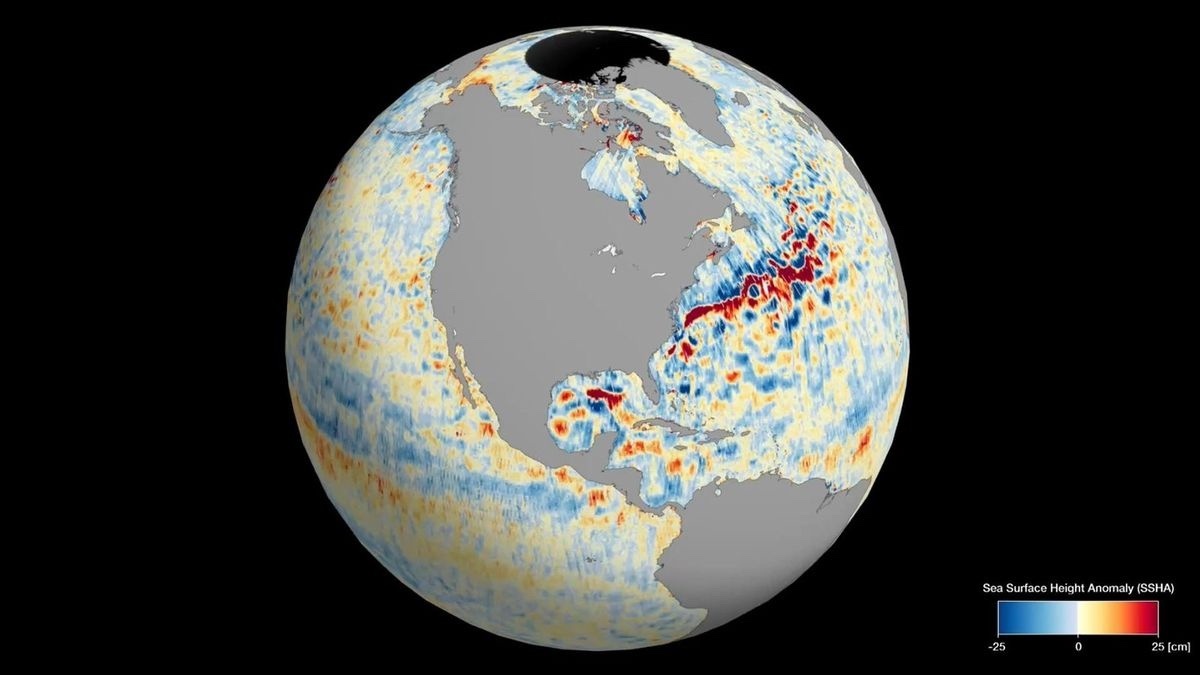7.11.2023
NASA shared striking views of nearly all of Earth's water in new maps of the planet's global sea levels.

An image showing global sea level data collected by the Surface Water and Ocean Topography satellite during its first 21-day science orbit, which it completed from July 26 to Aug. 16, 2023. (Image credit: NASA/JPL-Caltech)
NASA shared striking views of nearly all of Earth's water in new maps of the planet's global sea levels.
Data from the Surface Water and Ocean Topography (SWOT) satellite was used to create an animation that shows the varying surface heights of the planet's oceans and freshwater lakes and rivers. The data was collected during SWOT's first full 21-day science orbit, which started on July 26 and ended on Aug. 16, according to a statement from NASA.
Already, scientists are thrilled with the data the satellite is providing. "The detail that SWOT is sending back on sea levels around the world is incredible," Parag Vaze, SWOT project manager at NASA's Jet Propulsion Laboratory in Southern California, said in the statement.
SWOT launched to space on Dec. 16, 2022 aboard a SpaceX Falcon 9 rocket from Space Launch Complex-4E at Vandenberg Space Force Base in California. The Earth-observing satellite is a joint mission between NASA and the French Space Agency (CNES).
Over the course of its mission, the spacecraft — which orbits Earth at an altitude of around 533 miles (857 kilometers) — will measure the height of water over 90% of Earth's surface every 21 days, documenting changes in global water levels.
"The data will advance research into the effects of climate change and help communities around the world better prepare for a warming world," Vaze said in the statement.
The new animation was created using data from the satellite's Ka-band Radar Interferometer (KaRIn) instrument. KaRIn consists of two antennas separated across a 33-foot-long (10 meters) boom and is used to collect surface-height measurements by bouncing radar pulses off the water's surface, according to the statement.
Varying sea surface heights around the globe are documented in the new animation, including areas where water levels are higher than the global mean sea surface height (represented in red and orange), as well as lower than average areas (represented in blue). The data collected by SWOT offers one of the most detailed, comprehensive views of the water on Earth's surface, NASA officials said in the statement.
"Sea level differences can highlight ocean currents, like the Gulf Stream coming off the U.S. East Coast or the Kuroshio current off the east coast of Japan," NASA officials said in the statement. "Sea surface height can also indicate regions of relatively warmer water — like the eastern part of the equatorial Pacific Ocean during an El Niño — because water expands as it warms."
Quelle: SC
